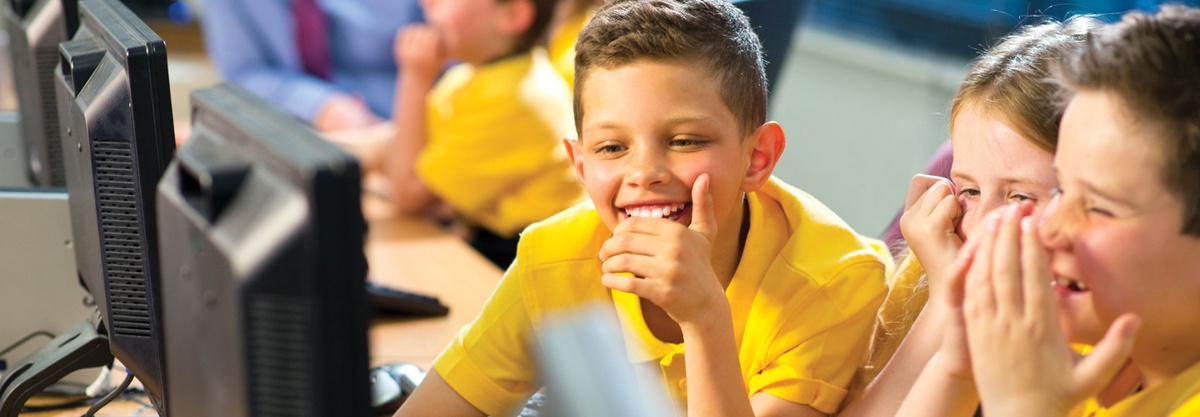Traditional teaching methods require students to absorb and consume information. It is tedious. Traditional teaching is unacceptable in the digital world, where everyone knows that a single approach doesn't suit everyone. When technology is integrated into classrooms, you create digital learning platforms that tailor educational content to every type of student. It caters to diverse learning styles and enables better student outcomes.
In one of the comprehensive studies of 11,000 students in 62 schools, personalized learning helped students show more significant gains in math. Their growth was proportionate to the time they experienced personalized learning practices.
Need for Personalized Learning Activities
A personalized learning path includes curriculum courses embedded with personalized learning activities that empower students to master a particular topic. As K-12 education focuses on the basics every student needs to learn, a customized approach will ensure no student is left behind. The strengths and weaknesses of each student will influence their learning, and personalized courses will help them reach their peak in their own time.
With a clear-cut learning path containing activities suitable for each learner, educators can ensure that everyone in the group achieves proficiency in a particular subject. Developing customizable digital learning platforms is vital for the following reasons:
- Learning ownership – Students who actively design their own course paths will be more engaged in learning. It motivates them to take control of their learning journey and achieve their learning goals.
- Self-paced learning – Customized learning paths change based on student's abilities. The self-paced learning ensures that students consume information according to their abilities. Incorporating self-assessment tools into the course will help them master every topic.
- Improved student engagement – Autonomy with course materials will encourage students to engage with the course more. Personalized education provides targeted intervention that will help with student progress.
- Caters to learning styles – Some students prefer watching videos, and some learn better with reading. AI-powered content personalization will present course content in multiple styles for students. This will help them choose the best delivery methods that are relevant and accessible.
Benefits of Personalized Learning
In a classroom setting, teaching methods encourage teachers to "teach to the middle," focusing lesson plans on average learners. It can bore fast learners and make it even harder for slow learners to learn course content. Personalized learning experience for each student offers the following benefits:
- Improves subject retention and comprehension
- Enhances student engagement by focusing on individual preferences
- Promotes self-direction and intrinsic motivation to learning
- Allows deeper student-teacher interaction
- Develops critical thinking, problem-solving, and decision-making skills
- Supports accessibility, inclusivity, and diversity initiatives to create an equitable environment
Leverage Digital LMS For Immersive Learning in Education
Setting up the framework for personalized learning in the context of online learning for schools is essential. It can be challenging to offer customization in a classroom setting without adequate technology support. Implementing a Learning Management System (LMS) for K-12 courses will benefit students, parents, and teachers. An overwhelming 86% of teachers agree that technology is critical to personalizing learning to support individual learning goals.
LMS ensures that everyone will have access to content whenever they need it. Fast learners can continue improving their understanding of the subject, while slow learners can access courses multiple times to comprehend all the aspects. The LMS offers multiple personalization strategies for educators.
Personalizing Learning Pace
Every student will learn and understand at their own speed. Regardless, teachers are responsible for ensuring that the whole class achieves the same level of understanding to advance to the next level of education. The LMS helps in customizing the learning pace with the following:
- Timely feedback on student understanding will steer them on the right path. This ensures that they make no mistakes in understanding the material. Learning gaps can be addressed immediately to keep them engaged throughout.
- Teachers can set weekly targets, formative assessments, and announcements using the LMS to ensure students don't fall back just because they can set their own pace. It will help students adhere to course standards and make timely assessments.
Personalizing Course Content
Student engagement varies with course delivery. Media content is more captivating and exciting for students who grow up in the digital age. With an LMS, the course content can be delivered in multiple ways, such as text, audio, video, and visuals. You can also integrate simulations, Augmented Reality (AR), and Virtual Reality (VR) components for immersive learning.
Teachers can quickly prepare supplementary learning materials using the LMS based on learners' needs. Students who struggle to grasp the concepts will benefit from personalized course content. Accessibility and inclusivity must be the cornerstones of developing LMS courses for personalization. Students from different backgrounds, histories, and locations can learn from content that is tailored for them.
Personalizing Choices
Unlike higher education, a vast amount of learning for K-12 students happens inside the classroom. Offering autonomy to students while maintaining control of the classroom is challenging for teachers. However, creating flexible learning environments with modular spaces and blended learning tools will make education fun for students.
With LMS, teachers need not be rigid about the assessments. They can quickly create different assessments tailored to the student's preferences. Some students may showcase their understanding of the subject by writing essays, while others may like to create multimedia shows about it. Such customization and options to choose assessments ensure equitable education for all.
Conclusion
Technology paves the way for personalized learning only when the right tools are used correctly. The school administration must involve all the stakeholders to explore available resources and find ways to offer student support. Student achievement can be enhanced with personalized learning activities, and EdTech tools provide critical data to support the learning journey.


No comments yet